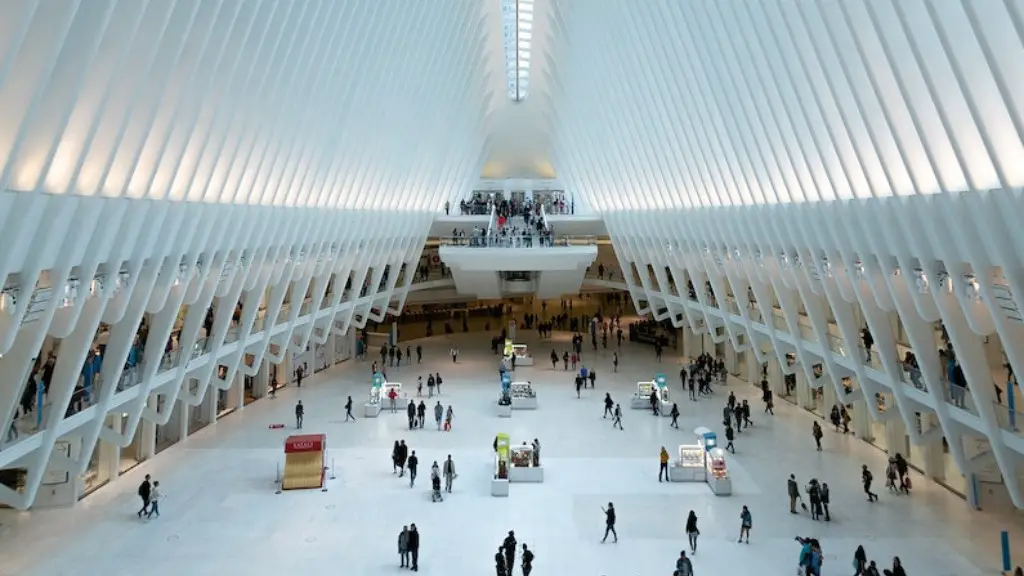How To Do Site Zoning In Architecture
Architectural site zoning is a complex process of analyzing, evaluating, and actioning the design of a property to maximize its potential, and create a balanced environment. Site zoning involves recognizing the existing natural features of a property, along with any features imposed by man-made elements, and re-defining them in order for the property’s potential to be unlocked. It is an essential tool for making sure that the best outcome is achieved when designing, constructing and managing a property.
To begin with, it is important to collect as much data as possible about the site. This includes researching the history of the site and gathering information about the local climate and geology. This initial research provides a foundation for understanding the zoning and planning considerations. It is also essential to understand the natural features of a site, such as rivers, lakes, or hills, and how they can be used to inform the design.
Once the research has been done, it is necessary to create a plan for the site. This involves creating a blueprint of the layout and zoning of the site, with each area being assigned an appropriate purpose. This could be a residential area, or a business or commercial area. The purpose should be based on the research conducted. In addition, if the site is to be used for farming activities, it is important to consider how the land can be divided into different farming use types.
In addition to the design and zoning considerations, it is also important to consider the different elements of the site. This includes the natural features, such as vegetation and water, and artificial features, such as man-made structures and pathways. Understanding the characteristics of each element, and how they interact with each other, allows for the most effective design possible. It also allows for the design of the site to take into account the existing use of the property and any additional uses it may be suitable for presenting.
Once the initial plan has been created, it is important to assess and review it to ensure that it is feasible and suitable for the designated use. This includes making sure that safety standards are met, and the design is appropriate for the purpose of the site. It is also important to consider any potential environmental impacts of the proposed plan, and to make the necessary adjustments to reduce or prevent any detrimental impact on the natural environment.
Finally, it is essential to create a timeline for the implementation of the plan and to establish who will oversee the process. This includes arranging for any necessary construction work to be carried out, and for the management of the property to be taken over by a professional organization. It is also important to create a plan for long term maintenance of the property and to ensure that it is kept in optimal condition.
Benefits of Site Zoning
There are many advantages associated with site zoning. The most obvious benefit is that it allows for the creation of a balanced and harmonious environment with the potential to unlock the full potential of a site. Other benefits include increased efficiency in the usage of land and resources, reduced environmental impact, improved safety standards, and enhanced property value. In addition, site zoning also enables the efficient and economic use of resources, and is an invaluable tool to ensure that a site is managed optimally.
Site zoning also allows for greater control and clearer regulation of the use of a property, which reduces the potential for adverse environmental impacts. It also affords greater safety standards and a better quality of life for residents. Lastly, it enables the efficient usage of resources and can provide an opportunity for increased economic value for the locality.
Disadvantages of Site Zoning
The most significant disadvantage of site zoning is the cost. While site zoning can increase the potential of a property, the implementation process can be an expensive one. Additionally, zoning regulations can be complex, and gaining approval from relevant authorities can take time. In some cases, zoning regulations can also be extremely restrictive, and this can limit the full potential of a site.
In addition, site zoning can also prevent people from making full use of their property. This can be limiting for those who are looking to improve their home or make use of the land in different ways that the zoning regulations do not support. Lastly, changes to site zoning can be difficult to implement, which can make it difficult for a property to adapt and grow as required.
Challenges Faced When Doing Site Zoning
When carrying out site zoning, one of the greatest challenges is obtaining approval from relevant authorities. This can be a lengthy process and require the submission of information and plans to show what the proposed plan offers. Additionally, there is often significant opposition to zoning plans, and this can cause delays and repercussion.
In addition, zoning regulations may be complex and difficult to interpret. This can make the planning and design process more difficult, and costlier. It is also important to ensure that the necessary information is gathered when undertaking a zoning process, as this data will determine the effectiveness of the zoning plan. It can also be a challenge to balance the interests of local residents with the desired outcomes for the zoning process.
Strategies for a Successful Site Zoning
The most effective way to ensure a successful site zoning is to create a well-researched and detailed plan. This includes obtaining as much data about the site and its environmental features as possible. It is also important to create an accurate timeline for the implementation of the plan, and to be clear about who will oversee the process, in order to facilitate smooth progress.
Creating a real-time dialogue between all interested parties is also essential. This can help to ensure that all concerns are addressed effectively, and that any disagreements can be discussed and settled without delay. It is also important to establish the zoning parameters up front, and to make sure that they are kept up to date, as zoning regulations can change over time.
Factors To Consider when Doing Site Zoning
When undertaking site zoning, the most important factor to consider is the potential use and impact of the area. This includes understanding the land’s potential in terms of housing, businesses, and any other amenities that may be useful. Additionally, it is essential to take into account the local climate and geology, as these can influence the effectiveness and sustainability of a zoning plan.
In addition, it is essential to consider any constraints, such as local laws or regulations. This includes any restrictions on property use and construction, as well as safety and environmental standards. It is also important to consider the natural features of the area, and assess how these can be incorporated into the zoning plan. Finally, it is essential to review the plan regularly to ensure that it remains up to date and meets the changing requirements of the area.
Strategies To Mitigate Disadvantages of Site Zoning
When attempting to mitigate the disadvantages of site zoning, one of the most important strategies is to consult experts. This allows for a thorough assessment of the situation prior to commencing any zoning process, and makes sure that the best outcome is achieved. It is also important to ensure that any plans are reviewed and monitored regularly, with experts consulted to make sure that the plan remains viable and effective for current needs.
In addition, it is essential to be aware of any potential objections to the proposed plan, and to make sure that these are addressed effectively. It is also important to engage with local residents, and to make sure that their views are taken into account. Finally, it is essential to make sure that the zoning plan is updated when necessary, in order to remain relevant and effective.




